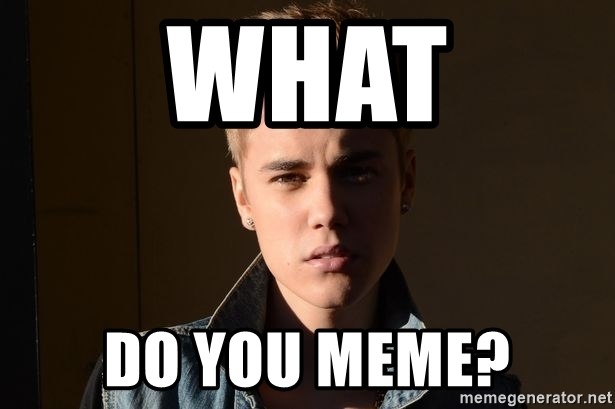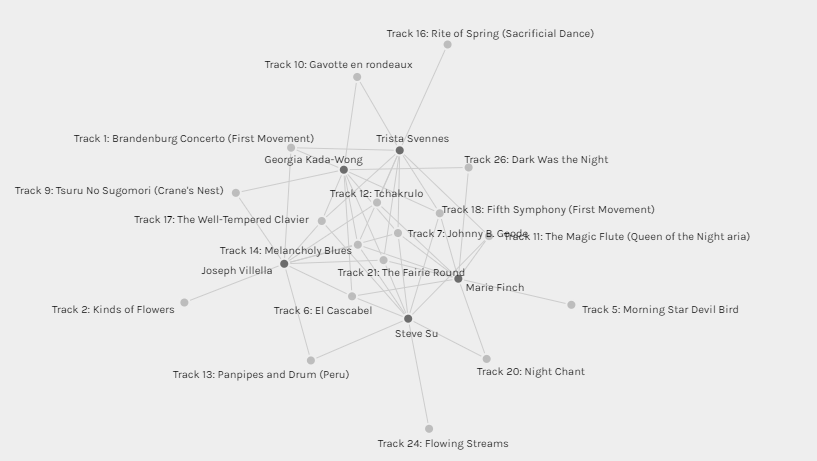“Humans have used memes to communicate for as long as they have used any symbolic system” (NY Times, 2022)
“Memes took what is already naturally occurring in the way that we communicate and supercharged it by making it global and simple” (NY Times, 2022)
The Development of Memes
Introduction/Rationale
For my final project for ETEC540, I chose to focus on and research the development of memes and its implications on literacy and education. In doing so, I started with looking at when and where this term was first introduced and then dove into how memes have evolved and changed over time. I decided to contextualize memes as its definition and use have rapidly changed in recent years due to the Internet. Although memes are said to have existed before the Internet days, it is no surprise that with the rise of the Internet and its heavy influence, that the way we interact with memes has changed too. As more time is spent online, memes have become an increasingly important communicative method.
The Definition of a Meme
The term ‘meme’ was first introduced by a British evolutionary biologist named Richard Dawkins in 1976 in his book called, The Selfish Gene and the word itself derives from the Greek word, ‘mimema’ which translates to ‘something which is imitated’ (Shifman, 2013). Dawkins defined memes as small cultural units of transmission, “analogous to genes, which are spread from person to person by copying or imitation” (Shifman, 2013, p. 363). Similar to genes, “memes are defined as replicators that undergo variation, competition, selection, and retention” (Shifman, 2013, p. 363). According to Shifman (2013), “memes are competing for the attention of hosts; however, only memes suited to their sociocultural environment spread successfully, while others become extinct” (p. 364). Upon researching about memes, I found the words from Castano Diaz (2013) to be particularly impactful, “memes are a unity of information (which can be a representation, a pattern, a rule, or an imitational icon. In other words, a content and a structure) that replicates by passing on via communication (one to one, one to many, or many to many). It requires a medium (channel) and an agent to be transmitted” (p. 96). This encompasses what a meme is quite nicely and it is no doubt then that the Internet has and will continue to drastically change the methods for which memes are used and consumed.
Memes can be seen as complex systems that incorporate three dimensions: content, form, and stance (Shifman, 2013). Wikipedia coins the term meme broadly as, “any piece of quickly consumed comedic content” (2022); the Merriam Webster Dictionary defines memes as, “an amusing or interesting item (such as a captioned picture or video) or genre of items that is spread widely online especially through social media” (2022); similarly, the Oxford University Press pose a modern definition of a meme as, “an image, video, piece of text, etcetera, typically humorous in nature, that is copied and spread rapidly by internet users” (2022). Although the many existing definitions online about memes are heavily related, the definition itself has evolved to include more relevance with how it is used online. Internet memes have two main attributes: creative reproduction of materials and intertextuality and are defined as, “units of popular culture that are circulated, imitated, and transformed by individual Internet users, creating a shared cultural experience in the process” (Adler, 2018; Shifman, 2013, p .367). In addition, with the rise of the internet, the term meme has been adapted to include other disciplines such as psychology, philosophy, anthropology, folklore, and linguistics (Shifman, 2013). Furthermore, memes are transmitted and replicated through all forms of communication including verbal, visual, or electronic transmission (Hernandez Cuevas, 2021).
Significance
It is clear that memes have existed long before the Internet but have drastically changed in the ways they are used for communicative purposes. Shifman (2013) identifies three attributes of memes that are particularly relevant to the analysis of contemporary digital culture, 1) “memes may be best understood as cultural information that passes along from person to person”; 2) “memes reproduce by various means of imitation”; 3) “memes diffuse through competition and selection” (p. 365). The cultural information that gets passed along, ultimately shapes individual and group mindsets and can form behaviours and actions (Shifman, 2013). All of which are done at a much larger scale with the use of the Internet. In this sense, the unique features of the Internet turned the diffusion of memes into a highly visible routine and creating and sharing memes have become a medium for individuals to feel like they are part of a group (Shifman, 2013). The Internet in other words has completely changed the way people use memes to communicate. Moreover, Hernandez-Cuevas (2021) outlines three different types of natures of memes that includes, harmful, benign, and beneficial memes. These Internet memes then spread through imitation, typically by social media websites and are then replicated through pictures and videos, and which are done intentionally. In this sense, memes are not only used for comedic purposes but they’re now recognized as a communicative method that is capable of spreading information, ideas, and opinions, they are visual representations of feelings and thoughts. Furthermore, with the expansion of the benefits of Internet technology, “the creation, use, and dissemination of memes has gradually evolved into a powerful popular culture” and these images that are filled with humorous content are related to, “seemingly superficial and trivial elements of popular culture” (Dongqiang et al., 2020, p. 22; Shifman, 2013, p. 364)
Internet memes today serve a variety of different purposes. According to Shifman (2013), “the Internet is not only saturated with mimetic activity, but also allows for its investigation in unprecedented ways and Internet memes are especially unique due to its groups of ideas that are being created with an awareness of others” (p.367). In addition, we can now analyze cultural information through the usage of Internet memes in order to better understand societal and cultural norms and users can develop a sense of community and collective identity through the usage of memes. Memes are also now widely used for educational purposes as they are attention grabbing and engaging for students and can be used as a vehicle to facilitate rich conversation in the classroom about important topics and issues. This reflection and conversation piece serves at the heart of using memes in education and according to Dongqiang et al., (2020), using memes in the learning process positively influences the communication atmosphere, while also, “implementing the requirements of modern development of educational media” (p. 23). Moreover, memes exercise creativity and student agency in new and exciting ways. They are user-friendly as they are easy to create with multiple existing applications, can be highly editable for target audiences, and provide multiple access points for learners, all rendering to their high suitability for classroom purposes. As discussed by Dongqiang et al., (2020), memes are a new type of medium in education that students can easily relate to, can, “carry the content of students’ learning in visual representations”, and, “are an important bridge between teachers and students” (p. 23). They use, “its own display of symbolic meaning and emotional substitution, thereby creating opportunities for aspiring teachers and students to participate in student learning” (Dongqiang et al., 2020, p. 23). Furthermore, using memes has shown to be especially helpful when studying foreign languages and strengthening connections between teachers working with foreign students (Dongqiang et al., 2020).
Conclusion
Evidently, memes have become an increasingly popular medium for communication that has drastically changed with the use of the Internet. Nevertheless, memes are everywhere, they’re hard to escape! You engage with them without even knowing sometimes online and through oral communication, they’re simply a part of our daily lives. In addition, what is considered a meme varies from communities and generations and memes today have grown to include many forms of online communication such as GIFs and other viral challenges. Memes are unique in nature in which they are expressive and have become a medium for storytelling that carries a vivid plot and context and where, “communication and use of the meme is just an interaction between different emotions, views, and values” (Dongqiang et al., 2020, p. 22). This in turn serves as a vehicle for activating enthusiasm and initiative from students to participate in their own learning. In this sense, memes are a new educational tool that provides more extensive materials for communication between teachers and students and the intentionality behind memes, “gives people a visual impact through the arrangement and combination of its images or text, and its concise content and intuitive representation of emotions make the meaning of communication more sufficient” (Adler, 2018; Dongqiang et al., 2020, p. 22). Moreover, understanding the phenomenon of Internet memes helps us understand ourselves and the world around us (Adler, 2018).
|
Year |
Brief Timeline of Memes |
| 1976 | The term was first introduced by British evolutionary biologist, Richard Dawkins who referred to it as, “a unit of cultural transmission or imitation”. Focused on oral and visual forms of communication. |
| 1990’s | Memes as short clips shared on Internet forums. Memes extended to include electronic forms of communication |
| 2000’s | Social media sites like Facebook (2003) and Twitter (2006) influence how memes are used |
| 2005 | YouTube was released and video memes became popular |
| 2010-present | Modern and more complex memes. Heavy expansion in the way we use and create memes, including in educational and professional settings. |
|
Benefits of Memes |
Challenges of Memes |
Current/Popular Uses of Memes |
|
|
|

Retrieved from: https://memegenerator.net/instance/66500140/justin-bieber-jealous-what-do-you-meme
References
Adler, A., (2018). Internet Memes: An editorial Snapshot. https://21centurytext.wordpress.com/internet-memes-an-editorial-snapshot/
Castano Diaz, (2013). Defining and Characterizing the Concept of Internet Meme. Volume 6 Issue 2. p. 82-104. http://www.scielo.org.co/pdf/cesp/v6n2/v6n2a07.pdf
Dongqiang, X., De Serio, L., Malakhov, A., & Matys, O., (2020). Memes and education: opportunities, approaches, perspectives. Geopolitical, Social Security and Freedom Journal, Volume 3 Issue 2. https://sciendo.com/pdf/10.2478/gssfj-2020-0009
Hernandez-Cuevas, E., (2020). The Pertinence of Studying Memes in the Social Sciences. Volume 7 Issue 2. https://sciendo.com/pdf/10.2478/gssfj-2020-0009
Merriam Webster Dictionary, (2022). Meme. https://www.merriam-webster.com/dictionary/meme
New York Times. (January 1, 2022). The Meaning and History of Memes. https://www.nytimes.com/2022/01/26/crosswords/what-is-a-meme.html
Oxford University. (2022). Meme. https://www.oxfordlearnersdictionaries.com/definition/english/meme?q=memes
Shifman, L., (2013). Memes in a Digital World: Reconciling with a Conceptual Troublemaker. Journal of Computer Mediated Communication. 362-377. https://academic.oup.com/jcmc/article/18/3/362/4067545
Wikipedia, (2022). Internet meme. https://en.wikipedia.org/wiki/Internet_meme
